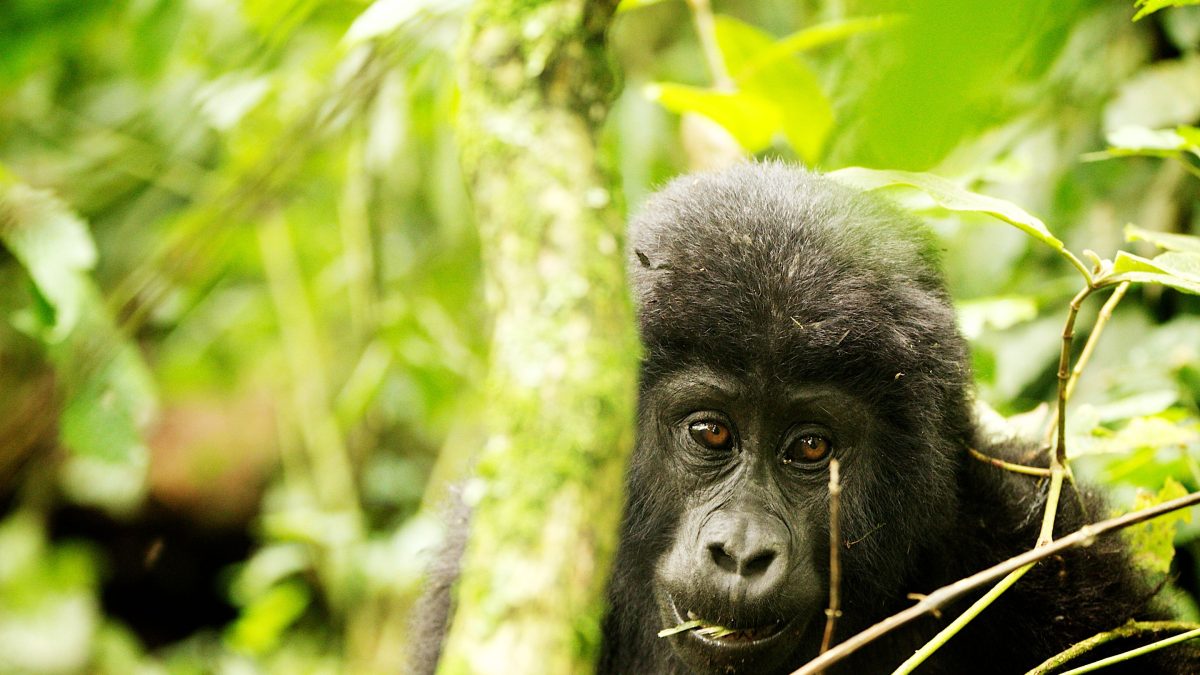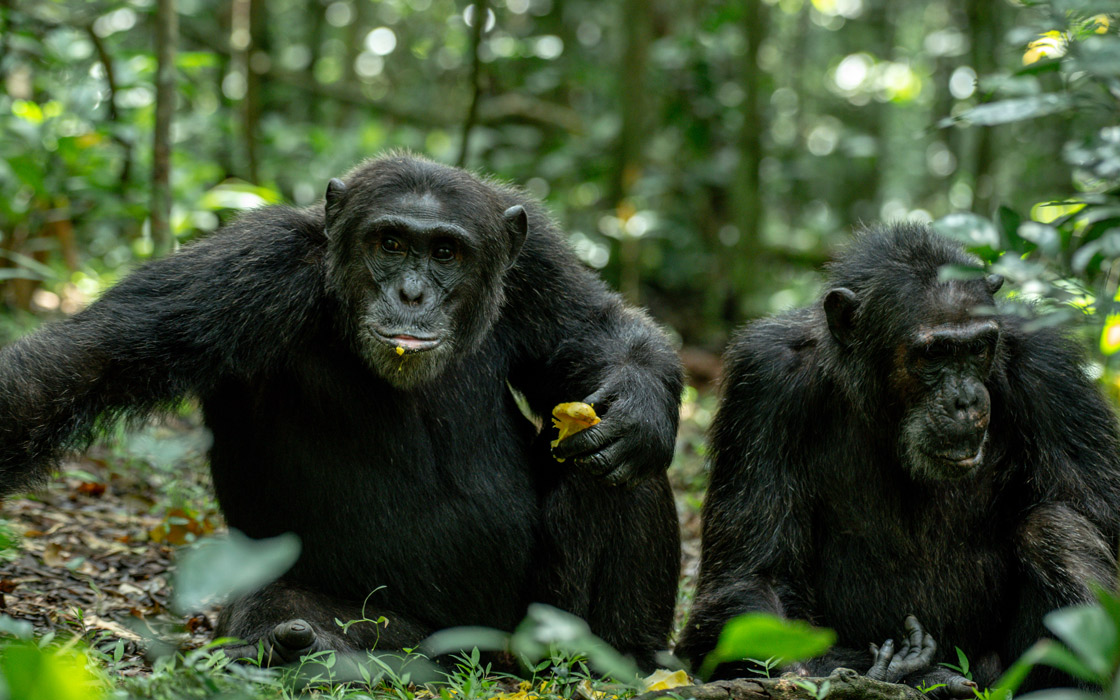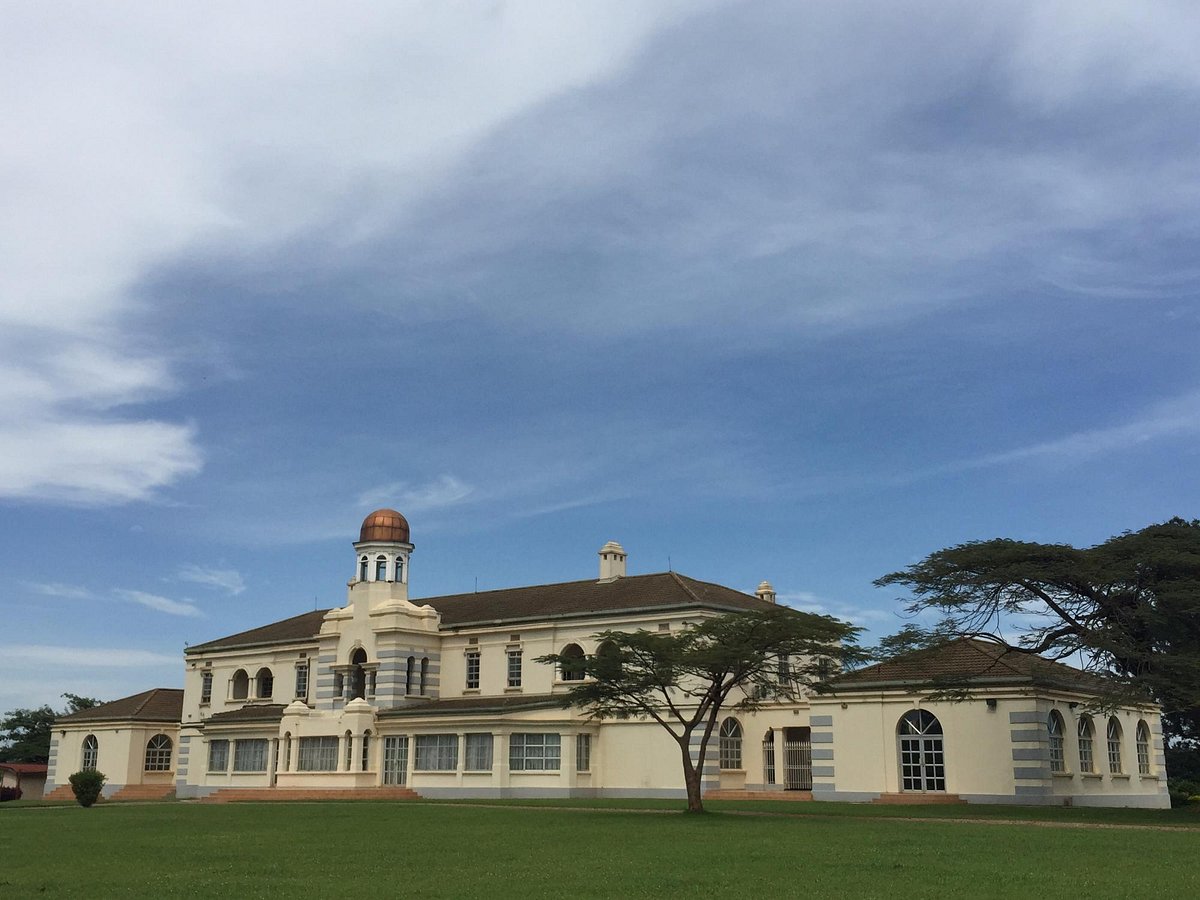
Kampala City Tour
Kampala City Tour
Kampala City Tour : Uganda’s capital city, Kampala, is home to more than 4 million people. Beautiful parks, museums, retail centres, restaurants, nightlife, and even theatres may all be found there.
Kampala is a fantastic safari destination, but it’s also a fantastic location to call home. In reality, the region’s low cost of living, good standard of living, and accessible housing make it a popular safari destination for expats.
Here are top attractions in Kampala that you simply must see on Kampala city tour. These include the National Theatre, National Museum, Owino Market, the Baha’i Temple and many others. For a 360-degree view of Kampala City, the Uganda Martyrs Shrine, Lake Victoria and of course the finest nightlife in East Africa, visit the Gaddafi National Mosque.
There are many wonderful ways to explore Kampala and have a good time throughout the day and at night.
What to see on a Kampala City Tour,
- Kabaka’s palace.
Kampala, Uganda is home to Kabaka’s Palace. King Mutesa 11 erected it between 1894 and 1901. The palace is located on the Mengo hilltop, with Kampala city below. The palace has two principal entrances. The palace’s public rooms are accessible from one entrance, while the royal chambers are accessible from the other. To enter the royal grounds, visitors must pass through security checks. Visitors can watch displays depicting King Mutesa 11’s life inside the palace. Additionally, there are exhibits of traditional African attire and creations including masks, drums, and spears. Every day from 8 am to 5 pm, it is open. The palace now has a museum inside and is accessible to guests. More information on the history of the palace and the Buganda kingdom is available to visitors.
- Gaddafi National Mosque.
Uganda National Mosque is one of Uganda’s most well-known landmarks. Construction began in 1972, and it was finished in 2006. Since then, it has come to represent Kampala. The mosque sits in the heart of the city and welcomes travelers from all over the world.
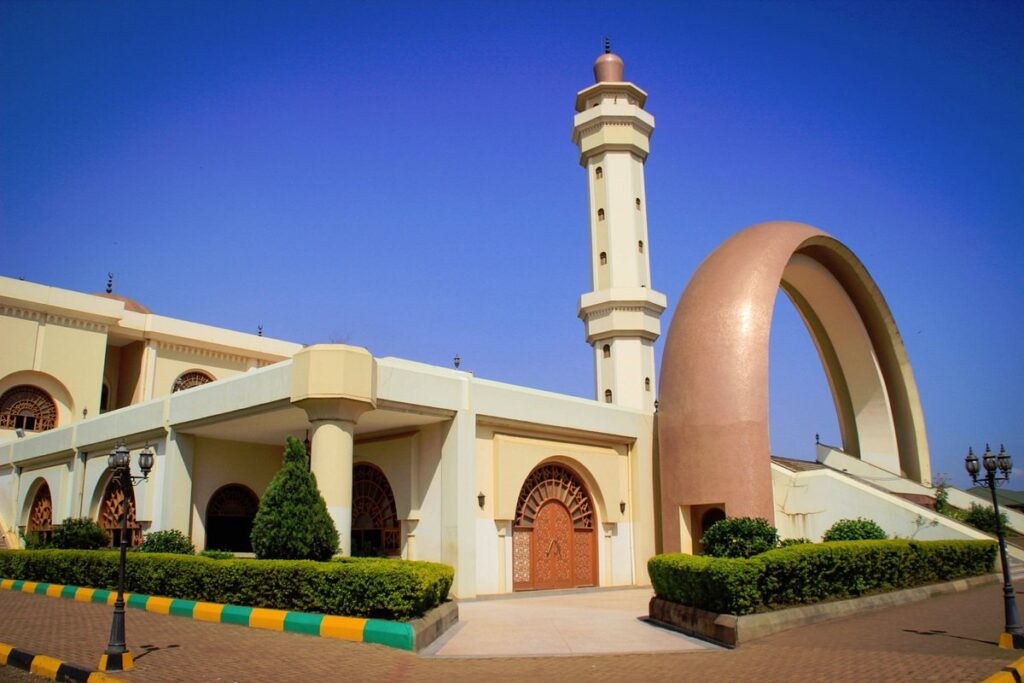
If you are staying in Kampala, going to the mosque is simple. Simply proceed down the street towards the river and keep an eye out for the sizable structure with the green dome. The mosque itself doesn’t charge admission, but donations are welcome.
- Namugongo Martyr’s Shrine.
The shrine to the Namugongo Martyrs is in Kampala, Uganda. It was constructed as a monument to the Namugongo Martyrs, who died as martyrs under King Mwanga ll. In 1892, King Mwanga 11 and his wife Queen Nakiwogo built the shrine. The shrine honors the Namugongo Martyrs who perished at the hands of British colonialists.
The shrine is now used by Ugandans from all over the nation to pray and celebrate their culture in addition to serving as a memorial to the Namugongo martyrs. The annual “Mukunguza” festival, which takes place on 3rd April, is only one of the many celebrations celebrated here each year. A celebration of Ugandan culture and tradition is Mukunguza.
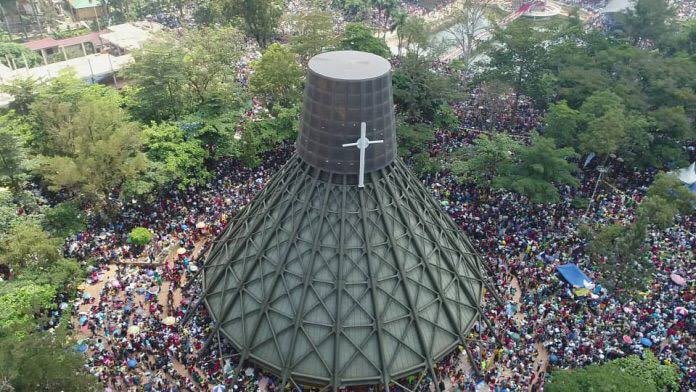
Daily hours Namugongo Martyr’s shrine can be open from 8 am to 5 pm. By going to the shrine, visitors can pay respects to the Namugongo martyred heroes.
- The Baha’i Temple.
The Kampala Baha’i Temple was constructed in 1972 and dedicated in 1974. The largest Baha’i temple outside of Iran is located there. The structure is made to resemble a typical Ugandan house. Visitors can view some of the local artists’ work inside. The Bahia Temple is open every day from 07:00 to 15:00 in Kampala.
At the front desk, guests must register and show their passports. Visit www.bahai.org/uganda to learn more. The Baha’is are a small religious sect that adheres to the Baha’i Faith’s principles. Mirza Husayn Ali Nuri, who eventually took the name Bahá’u’lláh, established the faith in Iran in 1844. He published his book Kitab-ul-Kashf in 1863; the name means “Book of Hidden Treasures.” It explains the core beliefs of the religion and its message, which places a strong emphasis on the harmony between all religions and humanity.
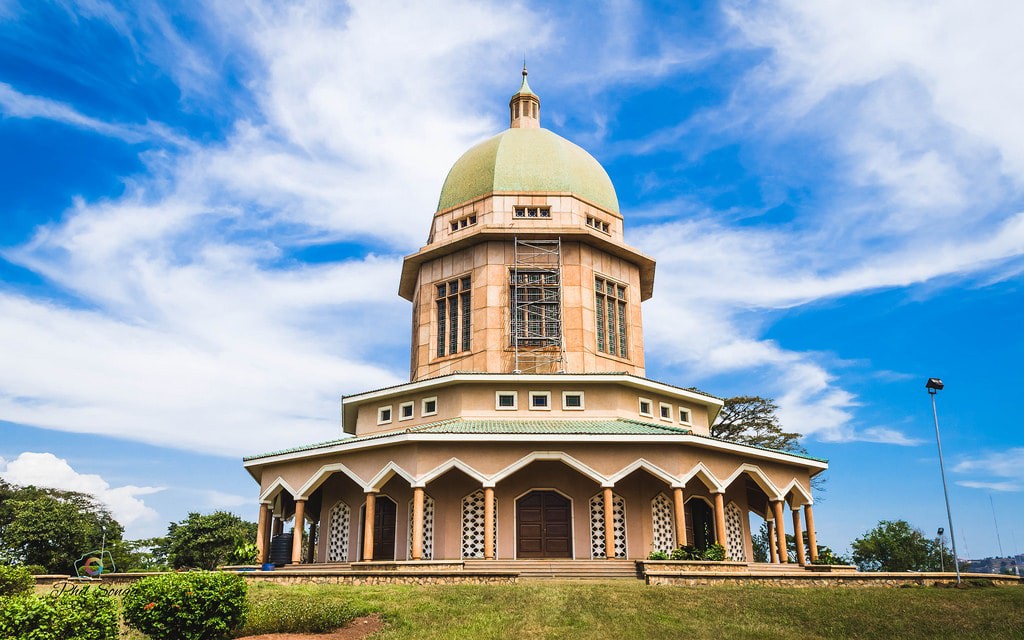
Bahá’u’lláh started disseminating the faith through letters and other written materials in 1868. Although he passed away in 1892, his adherents carried on preaching the gospel. The majority of the world’s six million Baha’is live in Iran, Iraq, Syria, Egypt, and Afghanistan.
The Universal House of Justice in New York City and the international centre in Haifa, Israel, are the two main hubs for the Baha’i faith. Local villages can be found in many nations, including Uganda.
- Uganda National Museum.
Uganda’s capital city of Kampala is home to the Uganda National Museum. Sir Henry Morton Stanley, a well-known explorer and journalist, founded it in 1894. The museum has been around for more than a century and houses numerous artefacts from various eras.
The largest collection of African art and cultural items in the entire world is kept there. Thousands of works of art and historical artefacts are shown in more than 30 galleries. A planetarium, a natural history gallery, a botanical garden, a library, and a research centre are additional amenities within the museum.
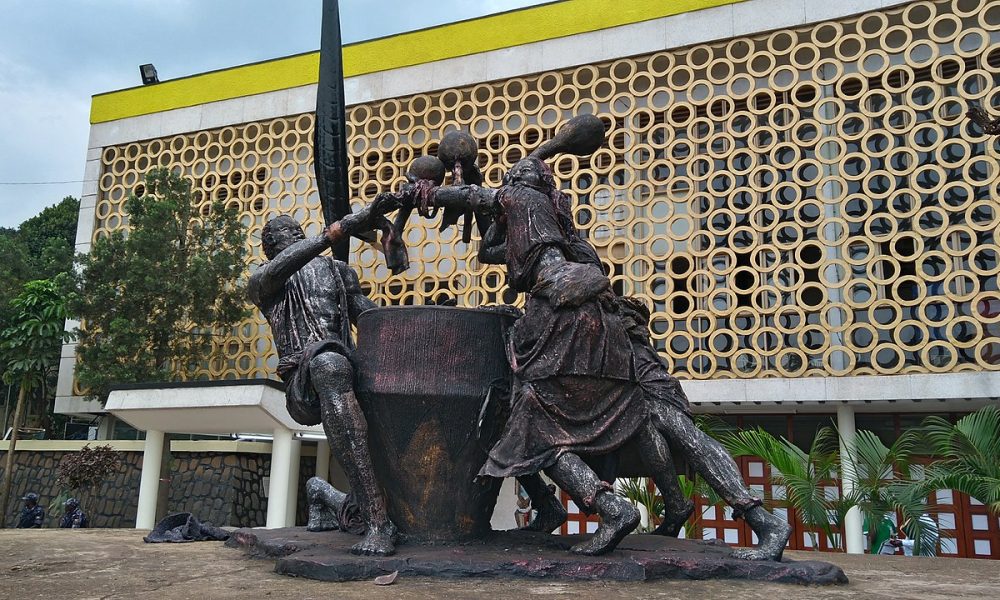
There are numerous options for getting to the museum. You can either purchase tickets online or pay to access the museum. However, it would be preferable to reserve a ticket in advance if you intend to visit the museum during busy times. Additionally, visitors are required to wear shoes within the museum.
- Ndere Cultural Centre.
Ndere Centre, commonly referred to as Ndere, is situated in Kampala, Uganda. It is a cultural hub that hosts a variety of events, such as dance performances, musical concerts, theatre productions, and film screenings. The institution was founded in 1996, and the Ndere Cultural Troupe dancing troupe made it their home in 2003.
It can accommodate more than 10,000 guests each day. It is a location where individuals from all over the world may come together and exchange thoughts and experiences. It is a serene setting where visitors can unwind and enjoy themselves.
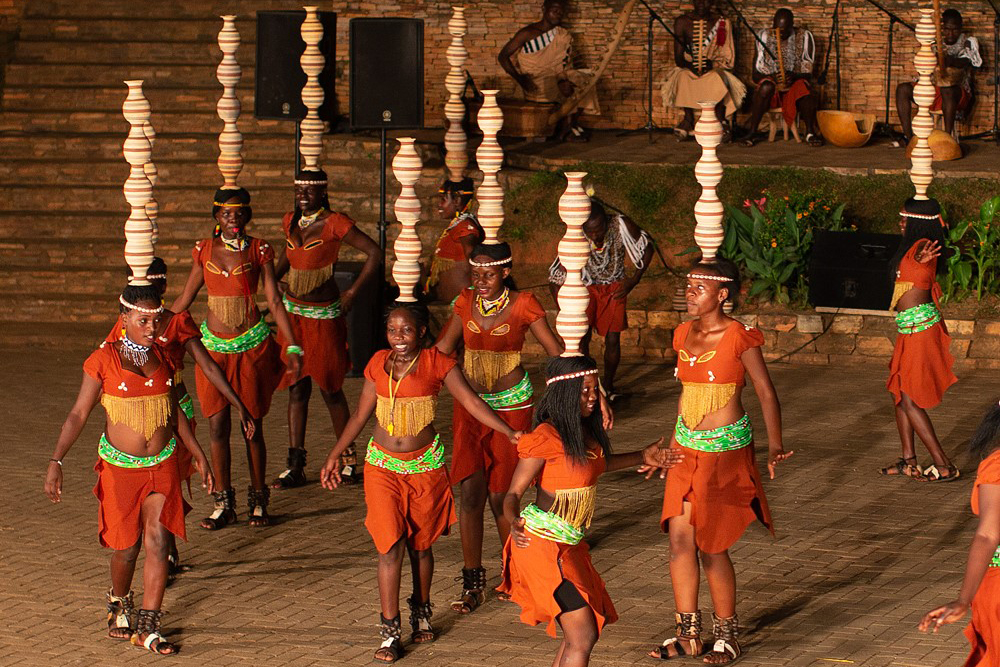
It serves as a resource for information about Ugandan origins, history, and culture. It is a setting that encourages harmony among its visitors. It is a location where visitors may get a taste of living in Uganda. If you want to see the best of Uganda, you should go there.
- Buganda Road Craft Village.
Uganda’s capital city Kampala is home to Buganda Road Craft Village. It is a location where local artists come together to market their wares. In the market, more than 100 artisans from the community offer their items.
This is a fantastic chance for visitors to have a close-up look at Ugandan culture. Visitors can purchase handcrafted goods from regional artisans and discover the stories behind each creation.
- Kabaka’s Lake.
Due to its stunning surroundings and resident birds and monkeys, this man-made lake has become a well-liked tourist safari destination in Kampala. The Kabaka’s palace is among the most well-known sights in the area of because of the lake.
- Namirembe Cathedral.
Beautiful Namirembe Cathedral is found in Kampala, Uganda. It was constructed between 1885 and 1888 and is now a well-liked tourist destination. Namirembe cathedral, which has a large collection of local historical artefacts, is located inside the cathedral.
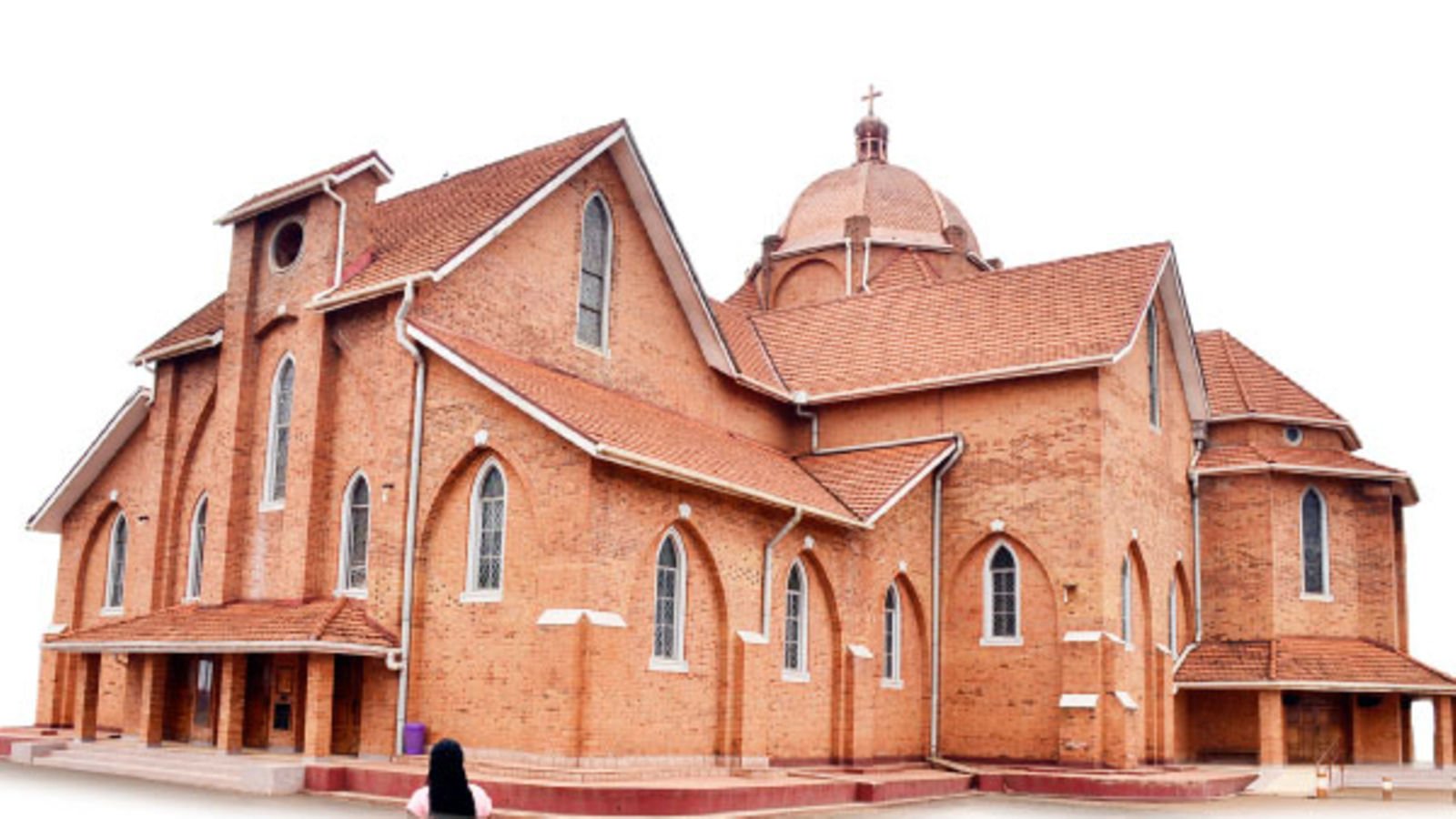
The stained glass windows in the cathedral, which were made by artist John Lavery, are famous. Daily hours for Namirembe Cathedral are 8 am to 5 pm.
Guided Kampala City walking tours.
Tours of the bustling streets of Kampala, vibrant markets like Nakasero Market, where many people purchase fresh produce from farmers, and historical sites like the Uganda Independence Monument and Museum that provide a greater knowledge of Kampala’s rich legacy are all included in guided walking tours of the city. During the walking tour of Kampala, your skilled city guides will impart their knowledge of the city’s history and bring the stories of the city to life.
The bustling Owino Market, a gathering place for shops selling anything from second hand clothes to items for daily life, is one of the most well-liked stops on Kampala city tours. The best local street cuisine in Kampala is called rolex, which is made of rolled eggs, veggies, and chapati. Local guides will also expose you to rolex handicrafts and traditional attire throughout this walking tour.
As you stroll through Kampala, you’ll come across architectural marvels like the massive Gaddafi Mosque, which offers sweeping views of the city, and the Kasubi Tombs, a UNESCO World Heritage site. The Ndere Cultural Centre offers a cultural experience where you may discover the various cultures of the nation through music, dance, and storytelling.
Walking tours in Kampala provide a distinctive alternative to traditional tourism, enabling you to establish a more intimate connection with the city. So tie up your walking shoes, embrace your inner explorer, and set off on a trek through the energetic streets of the City of Seven Hills

